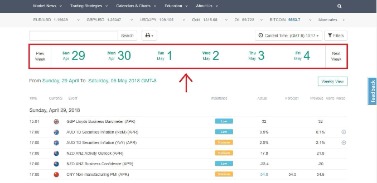Contents:

The slope of both the support & the resistance should be significantly different from 0. The RSI shows that CHZUSD is oversold, which would indicate upcoming bullish momentum. The price is also touching the bottom of the Bollinger band, which would also indicate upcoming bullish momentum. The safest way to trade chart patterns is to wait for price action to break through one of the trend lines and make a trade accordingly.
In our discussion here, we have focused on the falling broadening wedge wedge pattern for the most part. This was done intentionally because the reversal variation offers the best tradable opportunities as it relates to this formation. Let’s now go through the process of confirming the falling wedge set up. Within the normal wedge formation, we can often place a stop loss just beyond the extreme swing point of the structure. Due to the expanding nature of the broadening wedge, the stop loss placement is often a far distance away from the breakout point.
How To Identify The Rising Wedge In Downtrend (Rising Wedge Continuation)
The currency pair you choose is less crucial in this case, but try to stick with more active pairs because they are less expensive to trade and provide more opportunities. Your stop loss should be above the resistance and your profit objective should be a few pips below. You want to ensure that your chosen currency pair (stick with significant pairs like EUR/USD, GBP/USD, and so on) reaches a key support zone. For this strategy, you’ll need a short-term chart, such as the 5-minute or even the 1-minute. Finbold is compensated if you access certain of the products or services offered by eToro USA LLC and/or eToro USA Securities Inc.
Regardless of the type , falling wedges are regarded as bullish patterns. Similarly to ascending broadening wedges , Bulkowski suggests the price needs to test the support and resistance three times each. Additionally, the support should be steeper than the resistance. Ascending broadening wedges mostly occur during uptrends with rising local minimas forming an upward sloping resistance and raising local minimal forming an upward slopping support.
Chart pattern: Descending broadening wedge
It’s important to keep in mind that this Bollinger band exit strategy is dynamic, meaning that, it will print a new level with each passing bar. As such, we must monitor the price action closely to confirm that event. Alternatively, you can set up a scan within your trading platform to alert you when that specific event is triggered. The price action within the final leg of the rising wedge pattern penetrates above the upper Bollinger band. Now let’s turn our attention to the illustration below which represents the descending broadening wedge formation. A rising wedge is almost always bearish, however, in certain conditions a rising wedge can break bullish.
- Broadening wedges are classified depending on the direction of the support/resistance .
- Cover at the bottom trendline .Buy at 3rd touchWhen price touches the bottom trendline for the third time and begins rising, buy.
- However, they are good news for swing traders and day traders, who attempt to profit from volatility rather than relying on directional movements in a market.
Once you have identified this series, you will then need to look for the divergence between the highs and lows. Broadening wedges are difficult to trade for a number of reasons. The resistance is the level where the sellers are likely to step in and start selling the security. This pattern can take a long time to form, so patience is your key to success. For more information on this pattern, readEncyclopedia of Chart Patterns, pictured on the right, pages 98 to 114. The break in the resistance line definitively validates the pattern.
Falling wedge
A broadening formation is a price chart pattern identified by technical analysts. It is characterized by increasing price volatility and diagrammed as two diverging trend lines, one rising and one falling. It usually occurs after a significant rise, or fall, in the action of security prices.
Price analysis 1/30: SPX, DXY, BTC, ETH, BNB, XRP, DOGE, ADA, MATIC, DOT – Cointelegraph
Price analysis 1/30: SPX, DXY, BTC, ETH, BNB, XRP, DOGE, ADA, MATIC, DOT.
Posted: Mon, 30 Jan 2023 08:00:00 GMT [source]
Like the ascending broadening wedge, this structure can be tall or short. Place your order above the resistance line, and trade inside if the pattern is tall. Treat your take-profit and stop-loss orders the same as the ascending pattern. GBPUSD chart by TradingViewOn 15 August the price broke the support line of the pattern. After a pullback, it continued falling by making a bearish rectangle and a rising wedge pattern. Adjust the take profit level to the starting point of descending broadening wedge pattern.
It is an interesting pattern that has a few different variations. Depending on when and where the pattern appears within the price action, it can be classified as a reversal or continuation pattern. We’ll dive into the basics of recognizing and labeling wedge patterns, with the ultimate goal of learning how to trade it profitably in the market. The two trend lines should converge, with price action each trend line a two to three times each for a total of five touches to be valid.
- Rising wedge pattern in an uptrend is a reversal sign, while a rising wedge pattern in a downtrend is usually a continuation pattern.
- Partial rises/declines often indicate the direction of a breakout.
- It should be noted, however, that the intensity of the price movement higher will often be much more pronounced when the falling wedge pattern is a reversal pattern.
- Wait for the breakout of the upper trendline with a big candlestick.
- The odds are over 54% which is certainly better odds than a break in the other direction.
A rising wedge is more reliable when found in a bearish market. In a bullish trend what seems to be a Rising Wedge may actually be a Flag or a Pennant requiring about 4 weeks to complete. Partial declines commonly occur in broadening descending wedges . The price bounces off the resistance, moves towards the support without reaching it, and then goes back to the resistance where we can expect a potential breakout upwards.
Ascending Broadening Wedge Pattern
If you’ve read any of our previous postings on chart patterns, you’ll notice that they all have a bullish and bearish variant. Wedge patterns aren’t any different, however the terminology isn’t the same. Prices will immediately return to the lower trend-line and normally head lower, breaking towards the downside.
Which wedges are bullish?
The two forms of the wedge pattern are a rising wedge (which signals a bearish reversal) or a falling wedge (which signals a bullish reversal).
Investing involves risk, including the possible loss of principal. Bitcoin extensions if we break the channel/range to the upside and/or if we break this descending wedge to the down side. You can open a buy trade just after the breakout or wait for the price to retrace after a breakout to get a high-risk reward trade setup. The latter option is a bit conservative, but it is an excellent option to go with. A Trading strategy consists of entry, stop loss, take profit level, and risk management techniques.
How do you trade a descending broadening wedge?
Trading Descending Broadening Wedges
Swing traders can trade the pattern from top to bottom and from bottom to top. After the trendlines are formed, as soon as price touches the upper trendline go short. Cover this short (exit the trade) when price reaches the lower trendline.
A https://g-markets.net/ broadening wedge is a bullish continuation formation and appears in the middle of an uptrend. And this pattern completes when the price breaks the resistance line. A descending broadening wedge chart pattern is a bullish reversal pattern.

The difference is whether the pattern occurs during an uptrend or a downtrend. Rising wedge pattern in an uptrend is a reversal sign, while a rising wedge pattern in a downtrend is usually a continuation pattern. A rising wedge can be identified when prices start to converge and rise. This guide will provide examples of a rising wedge in an uptrend and a rising wedge in a downtrend, along with how to trade them. We’ll also provide tips on how to prepare for the rare event where a rising wedge has a bullish breakout.

The above figure shows an example of a descending broadening wedge chart pattern. This long and loose descending broadening wedge is typical for this chart pattern type. A partial decline forms at B, and that might be the only redeeming feature of this chart pattern. However, price breaks out upward and reaches the target within a week of the breakout. Now that we have a good understanding of the different types of wedge formations, and their implications, let’s try to build a wedge pattern trading strategy. We will focus on the rising and falling wedge patterns that occur as terminal structures.
We also review the literature in order to find their deterministic cause. The descending broadening wedge pattern can extend for long periods on rising volatility. Because the two “arms” are moving apart there’s no “crossing point” to the pattern like there is with a pennant, a wedge or triangle. The pattern should have a noticeable resistance area on the top and support area on the bottom. Typical of other chart patterns, the wedge probably won’t be perfectly formed. The main clue is the two lines moving apart from one another with clear support/resistance.
How do you trade a bullish falling wedge?
- Identify the wedge on a chart.
- Watch for the breakout.
- Confirm the breakout.
- Enter the trade.
- Set a stop-loss order for the trade.
- Set a profit target or choose how you will exit a profitable position.
- A trailing stop-loss could also be used.

